December 27, 2023
At the invitation of a Japanese friend who lives in Shimotsuke, Tochigi, my travel friend and I spent a day as her guest.
Strawberry Picking
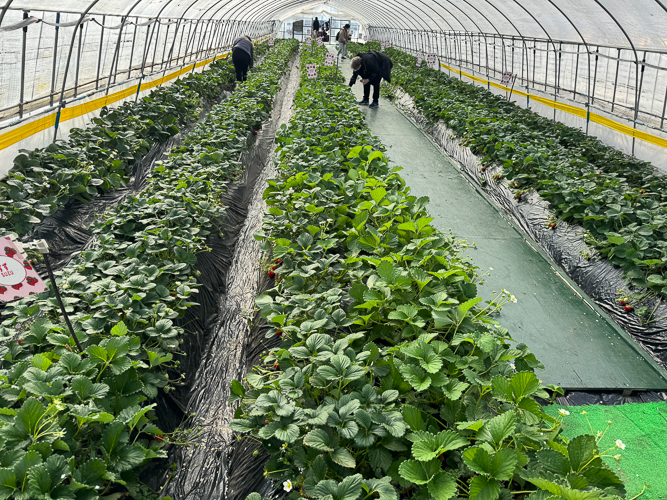
It began with Strawberry picking at a pick-your-own, eat-all-you-can greenhouse farm. Tochigi is Japan’s top producer of strawberries.
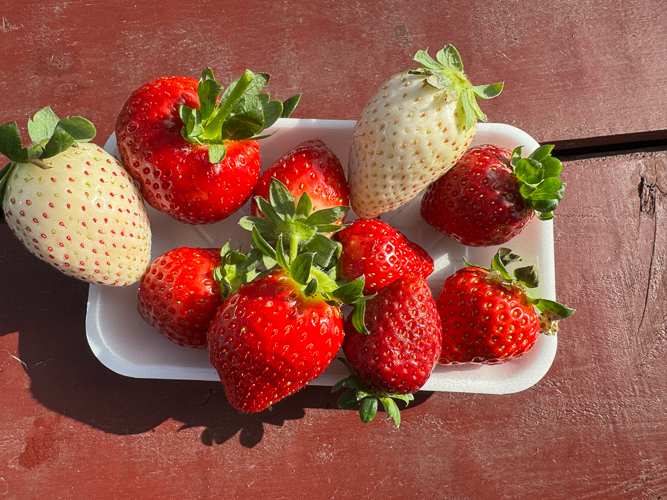 Japanese strawberries are considered one of the most delicious strawberries in the world. As a Californian, I would have to question that. The Japanese season runs from December to early May, and there are over 312 varieties of strawberries in Japan.
Japanese strawberries are considered one of the most delicious strawberries in the world. As a Californian, I would have to question that. The Japanese season runs from December to early May, and there are over 312 varieties of strawberries in Japan.
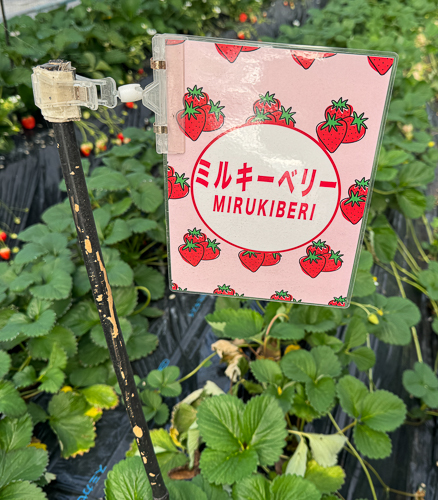
We picked several varieties. The Tochiotomi was the ripest, a variety developed in Tochigi province. I was fascinated with the Milkberry (mirukiberi) – They were sweet with a more pear texture. – We were a little early in the season, so the strawberries weren’t that terrific, but the company and the experience were.
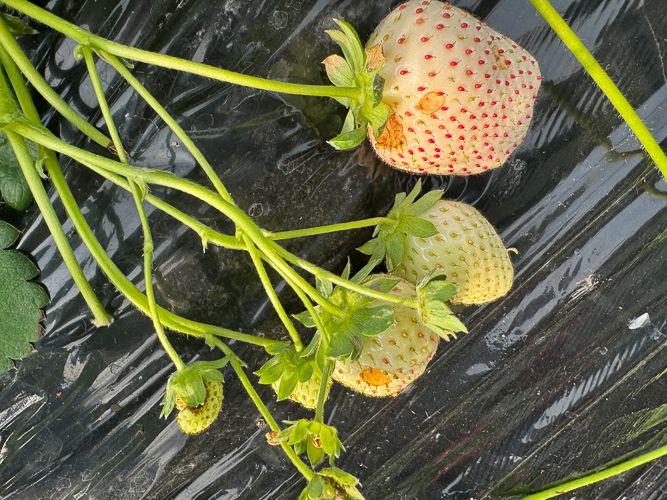
When the seeds are red, the Milkberry Strawberry is ripe.
Indigo
We spent quite a long time with Tadashi Higeta in his home in Mashiko, Tochigi, as he told of the history of his family’s Indigo dying operation and Indigo dying in Japan in general. He was such a lovely man. It was an honor to meet him and learn from him.
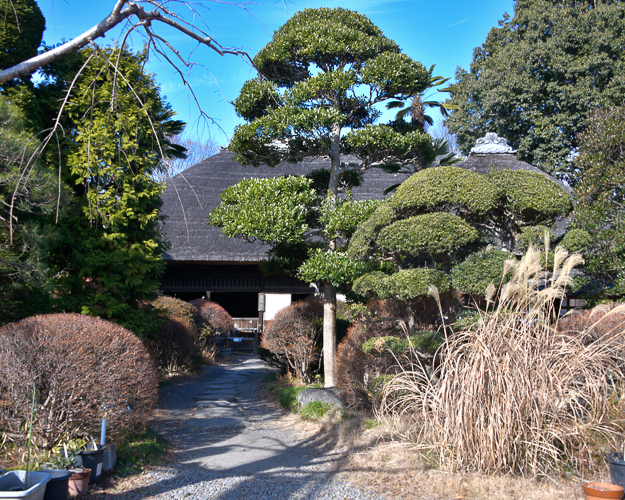
The Higeta House and shop are as famous as the family.
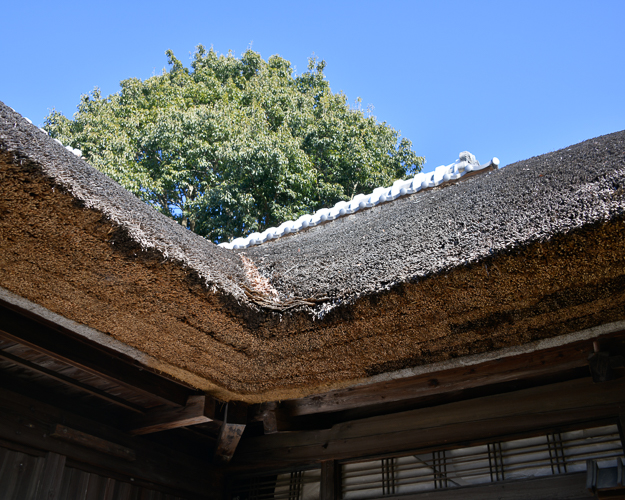
The shop is a one-story building of yosemune-zukure (hipped roof) style with a thatched roof built between 189 and 1801.
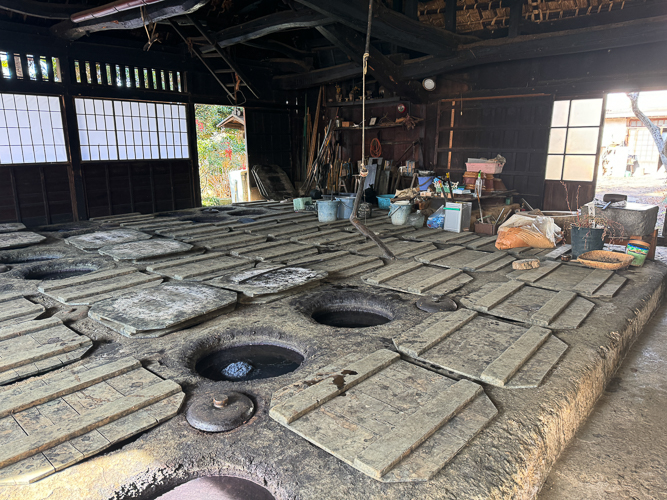
The west part of the building has the indigo dying workshop with its 72 indigo dyeing vats.
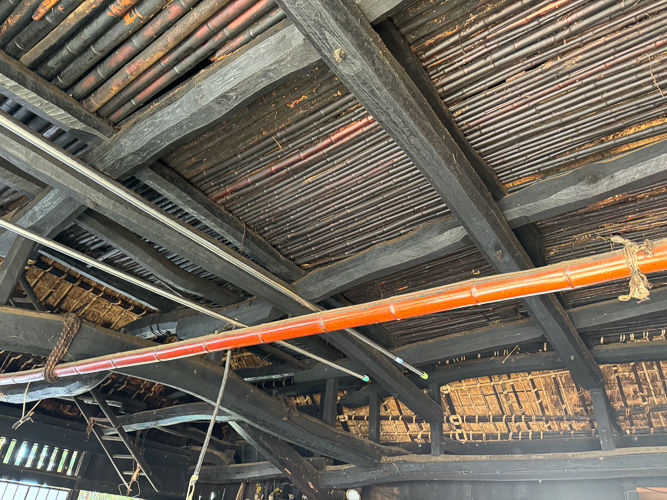 The ceiling of the workshop is made of bamboo slatted board with the most gorgeous wooden beams and girders.
The ceiling of the workshop is made of bamboo slatted board with the most gorgeous wooden beams and girders.
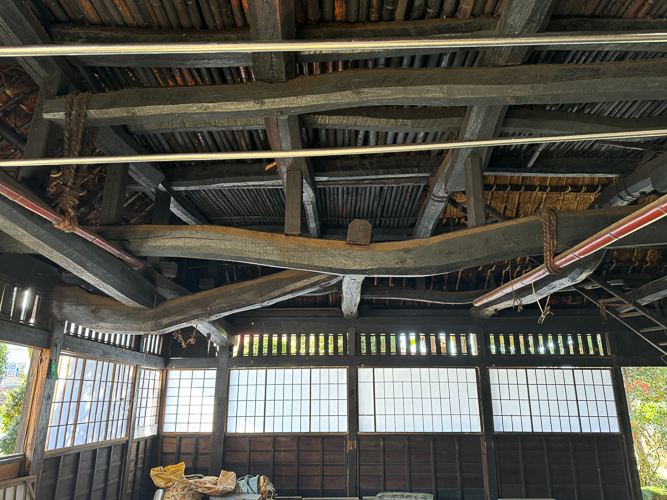
Spinning, yarn dyeing, and hand weaving are all done on-site. Cotton cultivation is also a part of their operation. They grow brown cotton, a cotton unique to the Mashiko area. The brown of the cotton varies each year, depending on the weather.
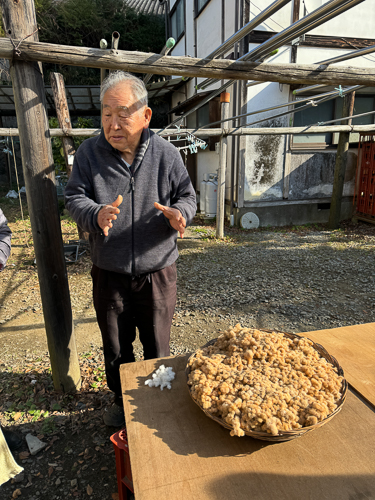
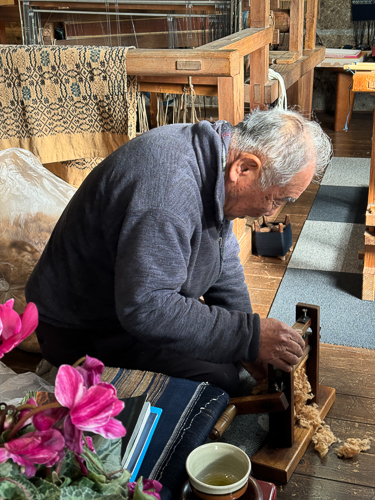
Mr. Higeta shows us how the seeds are removed from the cotton using a small model machine.
We were escorted into the house in the back for tea. Tadashi Higeta explains that the first run of Indigo is called “First Glance Blue”.
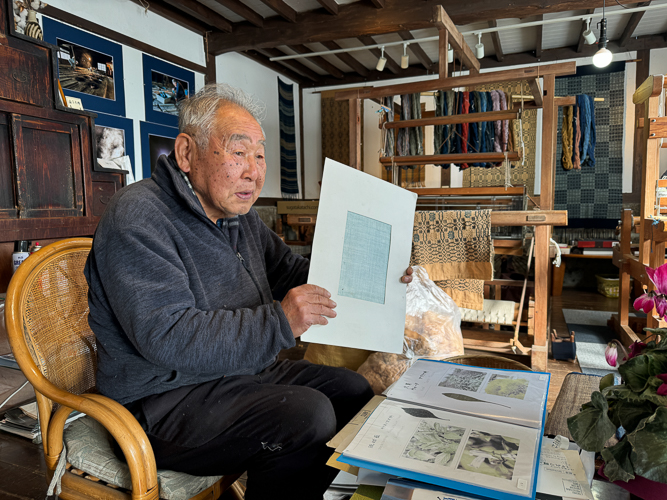
The studio dyes its cloth using traditional techniques: shibori, katazome, and stencil-resist dyeing.

The stencils, called katagami, are made from Japanese washi paper coated with persimmon juice for strength.
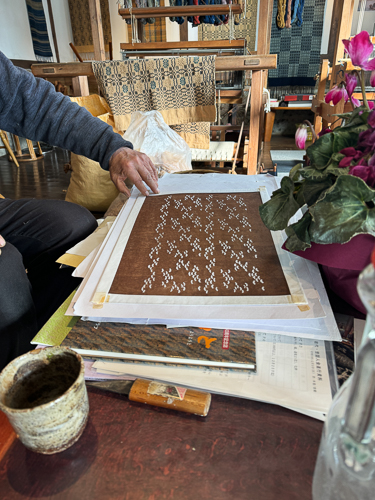
Tadashi Higeta shows us some of the stencils originally made by his father.
Tadashi is the 19th generation of Indigo dyers in his family and, sadly the last.
In 10th century Japan indigo was used exclusively by the elite classes. The Edo Period (1603-18767) banned working-class people from wearing silk, bright colors or patterns. Indigo was one of the only options available to dye fabric. Japanese Samurais were known to wear indigo due to its antimicrobial properties. Today, you will find most Japanese gardeners wearing indigo for the same reason.
Pottery
Tochigi prefecture and the town of Mashiko is also a major pottery center. Mashiko’s distinctive local red-brown clay has been used to make everyday objects like water jugs since the 1850’s. In the 1920s, Mingei ceramicist Shoji Hamada revived the community with his promotion of the folk art movement. Today, there are over 300 potters in Mashiko.
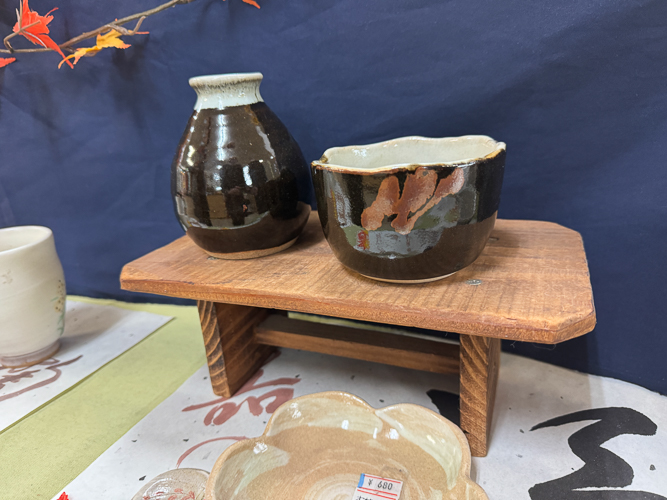
Typical pottery from the Mashiko area

The whiter colors are now preferred over the original dark Mashiko pottery.
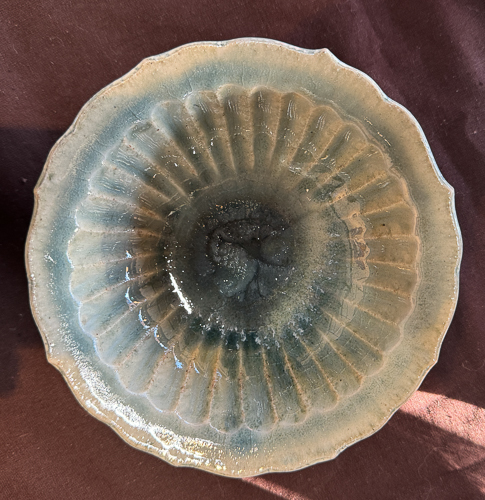
Work by Tora Murasawa
A piece from a special exhibit of Tora Murasawa’s work.
A day in the country would never have happened if it had not been for our friend Sumiko and her friend Yoko. It was such a nice break from the hustle of Tokyo.